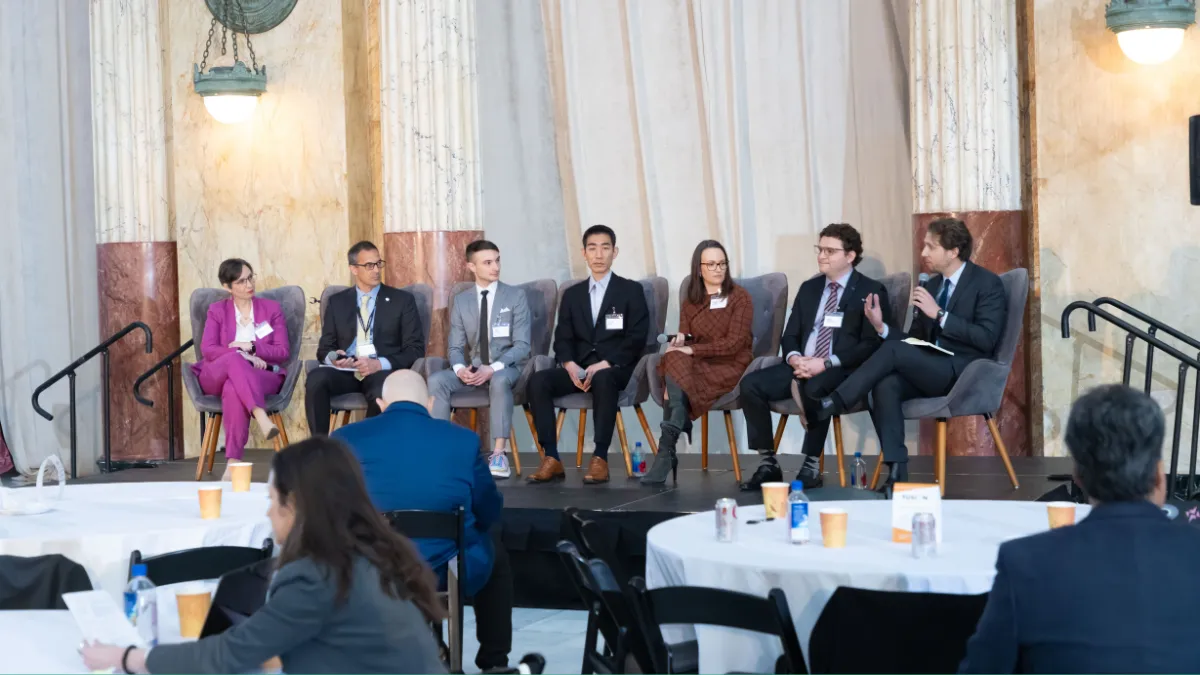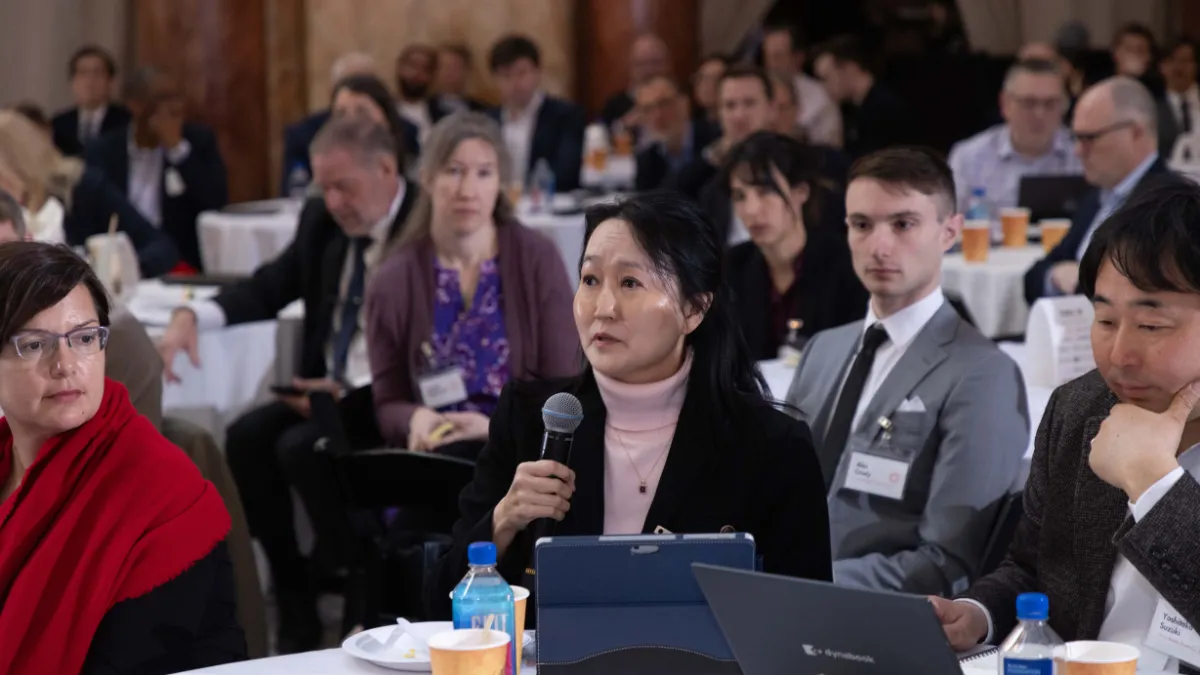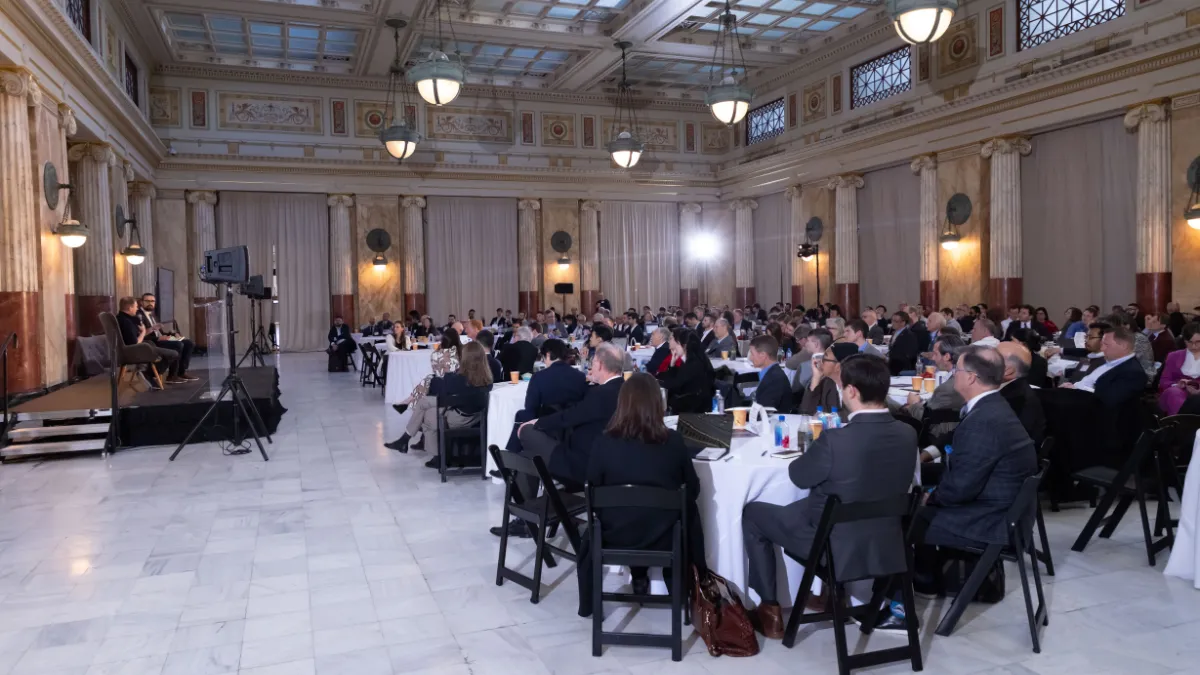The Fusion Industry Association Annual Policy Conference
By Cyd Cowley
Over 300 delegates met at the Fusion Industry Association’s (FIA) Annual Policy Conference held in Washington D.C. from 20th to 21st March 2024. The conference laid out a vision for the future of the private fusion industry. Panels were held on a range of different topics, including the role of the public sector, private fusion and investment, and effective policies to enable the fusion industry.
It was a very busy two days! Here are three insights from the conference.

Panel on stage at the FIA Policy Conference © Fusion Industry Association
1. The public sector has an essential role to play for fusion
At the conference there were several panels on the status and contributions of the public sector to fusion development. Members of Congress and academia spoke about the role of government in funding fundamental research and training the workforce needed for the rapidly growing fusion industry.
Delegates also discussed the economic role of governments in fusion deployment through subsidies and loans similar to those applied to other large infrastructure energy projects.
FIA member companies and representatives from bodies such as the IAEA discussed how governments should ensure clear and measured regulation for fusion.

May questions were taken from delegates at the FIA Policy Conference © Fusion Industry Association
2. Collaboration is vital within the private fusion sector
Many representatives from the private fusion industry and the wider supply chain discussed the role and progress of the private fusion industry. A key takeaway was the opportunity to be collaborative, rather than competitive. Even large fusion companies, such as Commonwealth Fusion Systems, spoke to the fact that they cannot solve every problem in fusion alone and the entire supply chain needs to work together to solve the many various issues in fusion.
The conference also featured a representative from ITER, who announced that for the first time they will be holding a conference to exchange lessons learned from the ITER project with private industry.
The meeting gave a unique and interesting insight into what investors look for in fusion companies, citing peer-reviewed publications, a good understanding of the Lawson’s criterion, and ability to fail fast as criterion used to judge fusion start-ups.

Panel on stage at the FIA Policy Conference in Washington DC © Fusion Industry Association
3. Policies to enable the growing fusion industry are good but could be better
Throughout the discussions on the public and private fusion sectors, one common thread was the policies that can better enable collaboration between the two sectors. Key successes and potential improvements were highlighted, mainly focusing on the US, but extending to discussions around the UK, Germany and Japan.
Specifically, the US milestone-based programme was unanimously hailed as an effective way to fund public-private endeavours, giving private companies the freedom to define their own scope and pace.
Nevertheless, both investors, companies and government officials highlighted the need for a change in funding structure in the US, where fusion still exists mostly under broader funding packages and programmes for energy research. This means it can be difficult to increase the fusion budget without increasing the budget for the entire energy programme. Furthermore, there was a strong call for centralisation of fusion in the US, to make funding, training and representation easier. The UK was used as a good example to aim for, where the UK Atomic Energy Authority (UKAEA) is the nexus for all public fusion endeavours.
One unanimous point made by government officials and private fusion CEOs alike, was the need for more fusion funding across the globe. In the US, optimism on passing new funding bills seemed low due to the divided state of the House of Representatives. However, on the last day of the conference the US House of Representatives passed a funding bill which proposed increased investment in fusion. It was an incredibly positive way to end the meeting, with a sense of real commitment from the US government to be a world leader in fusion energy.

A packed room at the annual Fusion Industry Association Policy Conference © Fusion Industry Association
